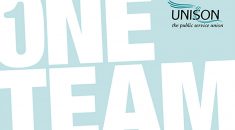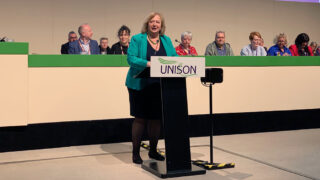The media is full of reports that we are in, or heading towards, a nursing crisis. That is to say, a huge shortage of them. But are we really? We dive into the data to find out.
First of all, we need to consider the shortage of nurses that already exists. There isn’t one definitive number for how many nurses we’re currently lacking. One figure frequently cited is 20,000, and analysis by the Health Service Journal said that last October 96% per cent of acute hospitals failed to provide the planned number of registered nurses to cover day shifts.
So, what we can say is that we don’t currently have enough.
The next question, then, is will this shortage get worse?
Knowing how many nurses and midwives we’re going to need in the future is complicated, as it depends on the mix of health skills that will be needed. But with the growing population and the current shortage, the answer from most bodies who take an interest in this kind of thing is ‘definitely .’
We currently have 690,773 nurses and midwives who can practise in the UK. This number is based on data from the Nursing and Midwifery Council (NMC), the regulator for nursing and midwifery professions in the UK. It includes nurses, midwives and specialist community public health nurses. Everyone in these professions legally has to sign up to the NMC register to practise in the UK, so it’s a good reflection of the current situation.
The latest NMC report, which came out in July this year, makes for interesting reading.
A drop in nurses
Up until March 2016 the number of nurses and midwives on the register was increasing, but the data shows that this year the number decreased.
Between March 2016 and March 2017 there was a drop of 1,783 nurses. Even more worryingly, in the first few months of this financial year (April and May), there was a further drop of 3,264 nurses, which makes the decrease 5,047 in total.
What’s going on then, why are there fewer nurses and midwives?
The impact of Brexit
The NMC’s register of nurses and midwives tracks where nurses originally trained. Data from the last five years shows that the number of nurses and midwives coming from EU countries has been rising steadily by 1% each year, reaching 6% in March 2017. The number coming from countries outside of the EU (but not the UK) has stayed steady at 10%. And the number originating in the UK has reduced from 87% in 2013 to 85% in the financial year ending in March 2017. We’ll come to UK nurses shortly, but what’s going on with EU nurses?
Well, while the number of EU nurses overall doesn’t look worrying, the NMC also publishes data on newly registered nurses, and that shows that since August 2016 there are fewer EU nurses and midwives registering for the first time to work in the UK.
The NMC says there could be several factors influencing this, including the introduction of new language controls for EU trained nurses and midwives (if they haven’t trained or worked in an English-speaking country before, they may now have to take an English language assessment), changes to where organisations are choosing to recruit people from, and, of course, Brexit.
In April, it was reported that a leaked internal document from the Department of Health had claimed we could have a shortage of up to 42,000 nurses by 2026, if all new international staff (including those from the EU) stopped coming to the UK. It seems likely that at least some nurses will continue to be tempted by our rolling green countryside, but still, the trend is concerning.
Brexit may be having an impact, then, but it is by no means the only issue.
Fewer people overall are becoming nurses and midwives
The NMC says that the number of new joiners – people becoming a nurse or midwife for the first time – fluctuates. In the financial year ending in 2013 there were 25,208 new joiners. In the year 2015/16 there were 30,638, but the year ending March 2017 that dropped to 29,025. If the number fluctuates each year, is the recent drop a problem?
Well, yes, because for the first time the number of nurses and midwives leaving the register is not balanced by the number joining, i.e. we have a net loss of nurses. We’ll get to the leavers in a bit, but for now, why are fewer people becoming nurses and midwives?
Some might point to the scrapping of the NHS bursary (a move UNISON campaigned against, because it could leave nurses with over £50,000 of debt). But, actually, getting rid of the bursary for nursing and midwifery students was only announced in George Osborne’s November 2015 spending review, and as nurses and midwives usually only join the register once they’ve graduated after a three-year degree, the newecomers who could have been joining the register now weren’t affected by the bursary change.
The reasons people don’t decide to become a nurse are obviously quite difficult to measure using data – how do you conduct a survey on all the things people don’t do with their lives? But anecdotal evidence from UNISON members suggests the six-year pay cap is likely to have had an impact.
Nurses are quitting
On to those who are quitting nursing and midwifery. In the year 2012/13 the total number quitting was 23,087. In 2016/17 that increased by 51% to 34,941.
So, why are our nurses and midwives leaving?
Conveniently, the NMC asked them. There were 2,240 people who filled in their survey and said they were leaving their profession (but not retiring), and the top reasons they gave were:
- Working conditions – for example staffing levels and workload – 44%
- A change in personal circumstances – for example, ill-health, childcare responsibilities – 28%
- Disillusionment with the quality of care provided to patients – 27%
Nurses are leaving to work abroad
Another trend to be aware of is a rise in nurses and midwives going to work abroad. Whenever a nurse or midwife wants to work in another country, the country they’re going to sends a ‘verification request’ to the NMC, to check they are actually qualified to do the job. This year, 4,153 nurses and midwives moved abroad according to verification requests, compared to 3,562 in the year 2012/13.
The NMC thinks this is significant, and says in the report that, ‘there appears to be a correlation between the rise in verification requests and the decrease in the NMC register.’
So, it seems nurses are leaving the profession because of working conditions and personal circumstances, and a lot of them are going to work abroad.
But what about new nurses?
The Universities and Colleges Admissions Service (UCAS) tracks how many people are applying for different courses, and their data shows that the number applying to study nursing courses is also going down. This time, scrapping the bursary could be a factor.
Could it be the scrapping of the bursary?
From August this year, those training to be nurses and midwives will not receive an NHS bursary. The bursary is a small amount of money originally set up as an acknowledgement that nurses have to work for the NHS for half the time they are studying (they work up to 40 hours a week between placements and study, which makes it hard for them to have a part-time job, unlike many other students).
It was announced in 2015 that the bursary would be scrapped, and between 2016 and 2017 there was a 23% drop in applicants for nursing courses, according to data from UCAS. Figures released after A-level results were out show that 18,390 people had places to study nursing this autumn, which is a 6% drop from last year.
In Scotland, where the bursary wasn’t scrapped, there was also a drop in applicants, but by only 4%.
In 2016 UNISON members who were studying nursing told us they wouldn’t be able to do it without the bursary. One of them was Marina who is studying to be a mental health nurse. She told UNISON “When my bursary is late I have to take my daughter to a food bank.”
When it comes to the nursing workforce there are several methods that could increase the number:
- Enticing more people to train as nurses and midwives by having a good training offer
- Encouraging skilled migrants to come to the UK
- Inspiring nurses who have quit to return to nursing
- Retaining current nurses
Sara Gorton, head of health at UNISON, said: “The public rightly expects the government to take responsibility for the future of the NHS workforce. There’s a lot to do, but they should start by ending public sector pay restraint and funding a proper NHS pay award.”
So it’s clear that we are facing a nurse and midwife crisis, but it’s one that could be avoided if the government acts now.






